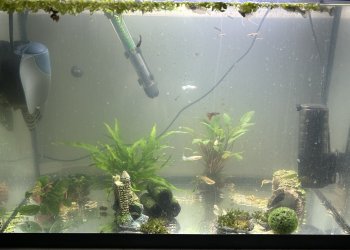CaptainBarnicles
Moderate Pleco Tolerator
Staff member
Global Moderator ⚒️
Tank of the Month 🏆
Pet of the Month 🎖️

Ah ha! It appears we are getting closer to what might be wrongI run it under tap water and squeeze. But with doing some research I believe I should be doing it with a bit of tank water because I’m probably stripping it to basically being new
When you're doing your water change, save some of the old water in a bucket on filter maintenance day and squeeze your sponges out in that bucket. Then chuck that water out on your garden, your plants will love the extra fertiliser! Seeing as you have very little plantage I doubt you actually need to be cleaning your filter every 2 weeks anyway. Leave it alone now to do its thing, clean it when the flow coming out of it starts slowing down.
It would be really good if you could post a whole tank photo including your filter if you can please? We may be able to spot something you could tweak that may help too

